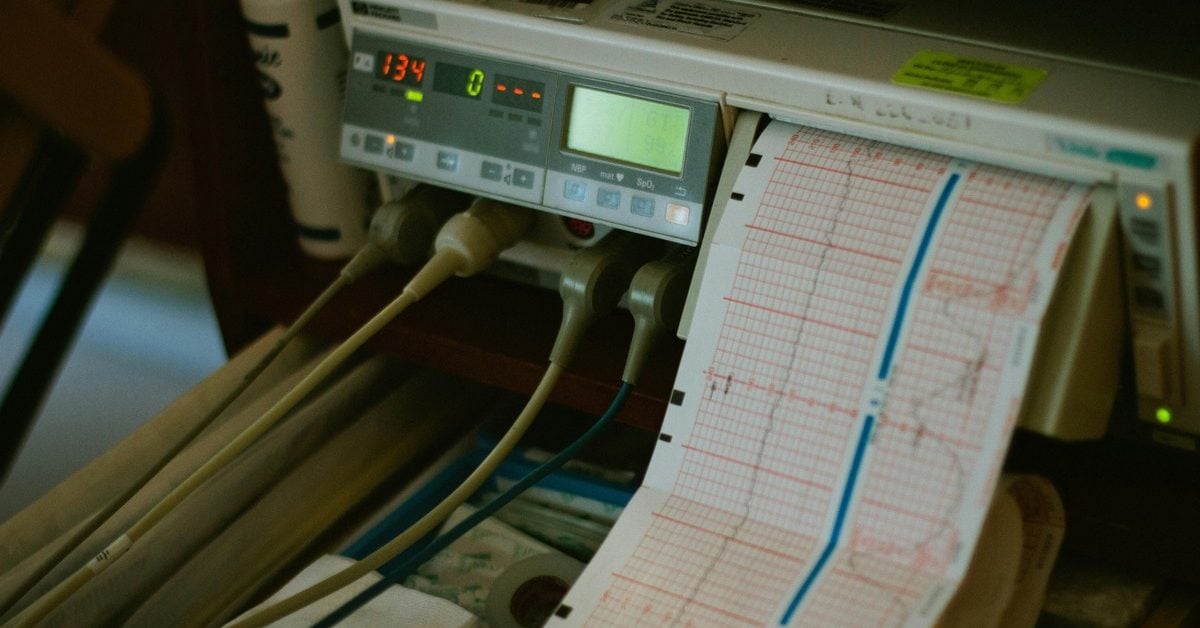BACnet may dominate the North American building automation market—commanding 95% of current BAS specifications—but the way this protocol is deployed is a mix of innovation and legacy. While automation has evolved into a high-speed, data-driven ecosystem powered by cloud connectivity and edge intelligence, a surprising number of smart building networks still lean on MS/TP to get the job done.
Yes, that MS/TP. The serial cable, half-duplex, token-passing architecture that traces its roots back to RS-485 in the 1960s. It’s still humming away in 2025.
Which begs the question: is it still up to the task? Can MS/TP still credibly operate as the backbone of an OT network when the entire concept of “smart buildings” has surpassed what it was ever designed to handle?
Jump to:
- TL;DR
- What Does MS/TP Do Well?
- What Doesn’t It Do So Good?
- More Obscure, Not Secure. Hard To Diagnose. Harder to Repair
- Obsolescence Risks and Vendor Lock-In
- Readers Respond
TL;DR
Is it still good for: new builds? No. If you’re starting from scratch, there’s no value in investing in outdated technology that will need to be replaced sooner than later, and needs all sorts of solutions to function in a modern automation/IoT/IP network.
Is it still good for: renovations and updates? Maybe. Under certain circumstances:
- Basic Automation Tasks: Ideal for simple control logic—temperature setpoint adjustments, on/off commands, basic scheduling—without the overhead of IP stacks.
- Isolated or Low-Traffic Zones: Works reliably in branch circuits serving fewer than 30 devices over moderate distances.
- Cost-Sensitive Retrofits: Extends existing wiring and devices without requiring Ethernet infrastructure.
- Deterministic Timing: Token passing guarantees each device a communication slot, providing predictable scan intervals suited to time-sensitive HVAC loops.
- Integration via Routers and Gateways: BBMD-enabled routers seamlessly bridge MS/TP to BACnet/IP backbones, enabling hybrid architectures.
But don’t ask me, I asked the boss! We chatted with Optigo Networks’ in-house expert on all things BACnet, Co-Founder and CTO Ping-Pook Yao, on what he thinks about the future of MS/TP and its usefulness versus a modern BACnet/IP solution.
Infrastructure Inertia: 70 Years of MS/TP
MS/TP remains a mainstay in part because of the concept of infrastructure inertia: many buildings already have it, and replacing an entire cabling system with Ethernet isn’t always feasible.
Most existing commercial and institutional buildings wired for BAS in the past half-century already have RS-485 cabling in place. Replacing this physical layer with Ethernet can be prohibitively expensive and disruptive—especially in occupied high-rise offices or university campuses. Renovation budgets and timelines often favor incremental upgrades over full rewiring, preserving MS/TP trunks and spurs.
What Does MS/TP Do Well?
Inertia may count for a big reason why many building operators may still opt to extend the longevity of their MS/TP systems, but that’s not all. MS/TP, despite its age, continues to demonstrate remarkable adaptability, robustness, and use case fit:
- It’s easy and much less expensive to install compared to high-speed networks (in supplies and labor). Moving to IP typically means bringing in IT teams.
- Its simplicity makes it more resilient in harsher industrial environments.
- MS/TP can leverage existing wiring in the walls of older buildings (twisted pair copper) making it ideal for lower cost renovations or improvements.
- RS-485 network cable has an effective range 10x that of Ethernet (4000ft vs 330ft).
- With support of up to 128 devices*, it can still carry capacity for many smaller building automation systems without segmentation.
- Can play well with BACnet/IP thanks to BBMD functionality that’s built into most routers today, making it easy to incorporate into retrofits (particularly historic buildings) and expansions.
- Recently, wireless MS/TP (W-BACnet) solutions have become available, further lessening the need for expensive rip and replace projects.
What Doesn’t It Do So Good?
- The limited capacity of RS-485 network cable imposes strict limits on network scalability. *In theory, MS/TP daisy chains can accommodate up to 127 devices, but in reality, anything beyond 35 devices on a chain and signal degradation and latency becomes problematic, making any real-time monitoring or control practically impossible.
- MS/TP overhead uses up 50% of the available bandwidth.
- Because of baud rate fragmentation (devices operating at different speeds), the network must always default to the lowest rate, sometimes as slow as 9600 baud (that’s 12,800x slower than a common IP network).
- MS/TP networks are drastically less secure than IP networks. Because MS/TP connects all devices on a single line, if one device is vulnerable, others can be easily attacked.
- MS/TP lacks even basic built-in security features like encryption and authentication, making it easier for unauthorized users to access and control building systems.
- Long distance runs or large areas like campuses require repeaters that introduce more latency, and specialty cabling that can quickly drive new build costs past using ethernet and BACnet/IP solutions
MS/TP: Hard to Diagnose, Harder to Repair
Diagnosing and repairing MS/TP networks often feels like a deep-dive into old-school electronics work. When a communication failure occurs, technicians must manually trace each node—using oscilloscopes to view signal waveforms, serial converters to isolate bus segments, multimeters to check continuity, and protocol analyzers to decode token-passing sequences. This hands-on troubleshooting process can require hours for a single 32-device MS/TP segment, as each connection and device must be tested and verified by hand.
By contrast, modern IP/Ethernet networks simplify nearly every step of fault isolation and repair. With most issues visible through network-management software and diagnosable in minutes using a standard LAN tester, technicians can resolve up to most issues considerably faster. The built-in diagnostics, traffic monitoring, and error-reporting features of Ethernet-based systems transform what used to be an all-day endeavor into a quick, largely automated task.
This is where OptigoVN shines. Along with a free traffic capture tool, OptigoVN’s suite of diagnostics supercharges your ability to troubleshoot MS/TP issues. From token times to missing devices, you can eliminate hours of manual guesswork in minutes.
Obsolescence Risks and Vendor Lock-in
Over the past few years, the BACnet committee has devoted most of its development energy to IP-centric features—like BACnet Secure Connect—rather than enhancing MS/TP’s serial token-passing protocol. At the same time, the U.S. General Services Administration now flags legacy serial controllers as “obsolete” in its Building Technologies Reference Guide and urges project teams to eliminate risk from end-of-life hardware.
This shift means that manufacturers are pouring their R&D budgets into new Ethernet and wireless products, making replacement MS/TP controllers and modules increasingly hard to find. Even when parts remain available, you can expect longer lead times and shrinking support windows—adding hidden costs and uncertainty to any MS/TP-based system you maintain.
On top of that, MS/TP networks can lock you into a single vendor’s ecosystem. While BACnet is an open standard, many suppliers add proprietary extensions to serial implementations—features that work great within one product family but don’t necessarily play nice with devices from other brands. The result? If you mix controllers or field devices from different manufacturers on the same MS/TP bus, you may spend days troubleshooting odd failures or compatibility quirks—and you’ll often need coordinated firmware updates or support agreements just to restore reliable communications.
In contrast, IP-based platforms tend to offer more consistent, plug-and-play interoperability, so you can swap vendors or roll out system upgrades without fear of breaking your network.
T1L: A Bridge Between Past and Future
As the industry searches for a middle ground between legacy MS/TP and full IP-based infrastructure, Single Pair Ethernet—specifically 10BASE-T1L—is emerging (re-emerging?) as a compelling compromise. T1L delivers Ethernet over a single twisted pair with reach up to 1,000 meters and power delivery via SPoE (Single Pair Power over Ethernet), all while using existing MS/TP cabling in many retrofits.
This makes it particularly attractive for large, cost-sensitive buildings where full CAT6 rewiring isn’t feasible. Unlike MS/TP, T1L supports full-duplex communication, eliminates token passing, and brings native IP to the edge without sacrificing cable run length or device simplicity. Though broad manufacturer support is still developing, early adopters view T1L as a “best of both worlds” solution—offering the structure and scalability of IP networks while preserving the installation economics of MS/TP.
10BASE-T1L made our list of Networking trends to keep an eye on in 2025. Curious what else is there? Check out the whole list here.
Our Readers Respond
We asked our followers on Reddit and LinkedIn their opinions on MS/TP in 2025. No surprise, there’s support for keeping it, as well as moving on. Here’s some of the highlights.
- “You know me, Optigo. MS/TP is DEFINITELY worth it:
- Cable run limitations of CAT5 make it the only practical solution on some jobs, is that job yours? The uncertainty can make the bid process frustrating.
- MS/TP uses clear text unencrypted BACnet data. But being on a physical layer that is hard for laptops to plug into, it adds a layer of security by obscurity for sites with poor physical security. BACnet IP is not only the same unencrypted plain text, but it is on an easy to access interface.
- Loytec has a really good product, but their support for MS/TP is not great. This severely limits retrofit opportunities. Contractors need the flexibility to completely support what is already in a building to provide the most cost effective solutions for their customers.
- MS/TP is robust and reliable. Sure LON is more robust, but MS/TP is more widely understood and supported. Not just by the manufacturers but also the boots on the ground.
- Alternatives to MS/TP are not ready for prime time. T1L is not widely available or supported by manufacturers or guys in the field. BACnet IP was already discussed. BACnet SC has issues with vendor lock on certificates and a general lack of support for short lived certs… it needs to bake a little longer to be a viable alternative.
- I love working with serial networks. Not a really good reason, I suppose…”
– Aaron Hastings, Apex Consulting Systems
- “For now I would say yes. What type of building are you operating, and who will you hire to maintain it? If uptime isn’t critical, and a handyman will be running/maintaining the site, then MS/TP will be more than adequate. Too often these facilities struggle to keep up with routine maintenance, and adding more complexity isn’t going to help. Future proofing is also likely not an issue because the main focus is keeping maintenance costs as low as possible, and MS/TP will be supported until I’ve long been in a grave. Will you be running a building where down time is critical and/or employing people with controls knowledge and know-how? Then maybe think about IP, but even then it isn’t a given. It enables the IT team to root out network issues rather than calling in a contractor, if they take ownership of the network. There is a small niche where MS/TP isn’t the right tool, but BACnet IP for unitary controllers is nothing more than a nicety. Properly installed MS/TP networks are the right fit 99% of the time. Everyone is just in love with the phrase future proof at the moment.” – Reddit user @mitchybw
- MS/TP is perfectly suited to a good 90% of BMS traffic. Especially so if the traffic pattern is actually considered when designing a system. Anything on the IP network that DOES need data from the MS/TP will still have no problem accessing it, and the IP network will have no actual impact on the operation of the air handler and its associated zones. – Reddit user @crazifuzzy
- Generally prefer an IP option, but MS/TP definitely still has its place until costs come down and technology in field devices catches up. MS/TP definitely has its advantages on a daisy chain network when encountering controller or power supply issues. -Reddit user @SpiritualPipe483
- I was done with MS/TP as my primary communications back in 2014. Best decision of my life. The things I can do because of that pivot still boggle my mind. MS/TP has its place as a field bus, but often I find myself thinking if I already have BACnet/IP or even better BACnet/SC why even bother when I can use Modbus and have a good line of demarcation? No COV BS, no device ID conflicts. I’m sure this is controversial and it will bring out all the IP haters but do I really want to be doing MS/TP networks in 10-20 years? Reddit user @puzzleheadedcomb8279
- IP over CAT 5/6 is more expensive and less flexible than MS/TP. Distance limitations, lack of built in switches on equipment for daisy chains, and the slower, more complicated terminations make it much less attractive of an option than MS/TP. T1L may address most or all of these issues once the OEMs get on board.-Reddit user @Fr33pantsForAll
- Yes….but its days are limited if T1L catches on. It’s got the cost benefits and cable runs of MS/TP, the ease of IP and none of the token passing crap. The only hurdle is the fact you are dumping even more IP addresses on the network, but network segmentation solves that. We are seeing an increase in IP infrastructure being spec’d, but MS/TP is still the cheaper choice and we will often go in with it to be competitive. -Reddit user @manvsfauna
- I absolutely love MS/TP more than ethernet almost entirely due to reliability and tech troubleshooting when networks aren’t functioning. You have a shielded 2 wire that is twisted daisy chain vs Ethernet which is 8 wires on one port and 8 on another and will not communicate if power is shut off. For me it’s an easy decision Ethernet is much harder to install and maintain and has a tremendous amount of possible errors.– Reddit user @mvrs1610
- MS/TP can be preferred by the tenant where security is a consideration. The physical limitations can be managed by keeping floor terminal box loops small, less than 30 devices or so. -r/moleman7474





